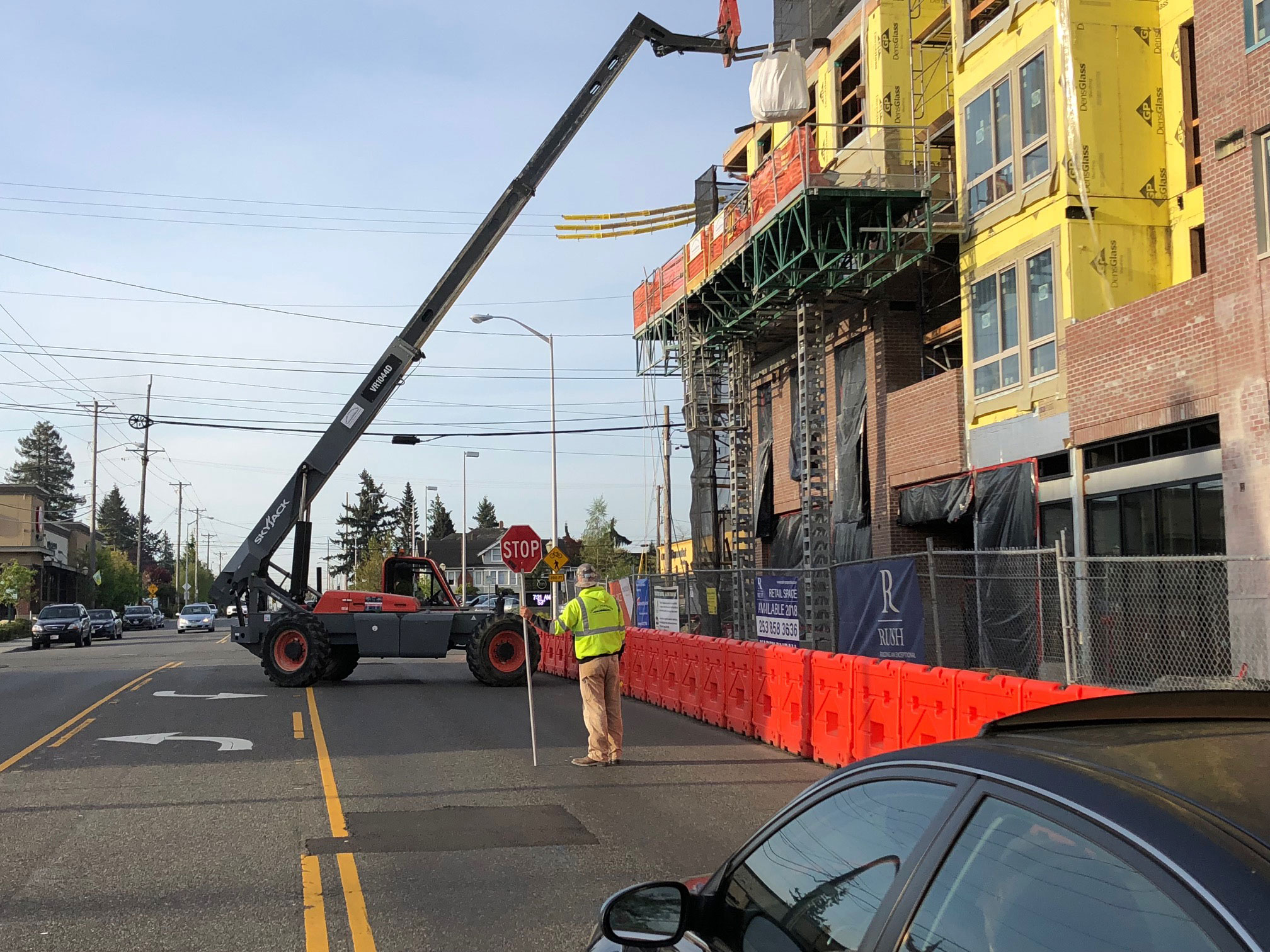By Morf Morford
Tacoma Daily Index
It is one of the most widely known literary lines, though few know it fully.
Some see it as a some sort of nearly universal proverb, and perhaps it is, but it certainly does seem more pungently true at some moments than at others.
We, in the greater Tacoma area, have certainly seen our brighter – and darker – moments – and, for whatever reason, the most extreme tend to come together.
We also have seasons, years, even decades, where we just seem to slog through and struggle just to keep moving.
This is not one of those seasons. We, like a few other choice parts of the country, are facing challenges of growth, development and identity as we have rarely, if ever faced before.
A rising tide lifts all boats
I grew up in the shadow of this term (it was a favorite of President John F. Kennedy). I took it as a given that the benefits of a rising economy, or standard of living, would be at least relatively equitably distributed.
Like far too many slogans and proverbs, I just don’t believe it any more.
The case could be made that more of us are better off than a century, or decade or two ago, thanks to vaccinations, education, public sanitation and safer foods, but these social benefits are not equitably dispersed.
Even in Tacoma, one neighborhood, one street or one school can be vastly different from one just across the way.
Korbett Mosesly has put together a sobering map of child poverty in Tacoma: http://korbettmosesly.com/2016/05/11/map-of-children-living-below-the-federal-poverty-level/.
In Tacoma, one in twenty married couples is in poverty while one in three female-headed households is in poverty.
The social (and tax) cost to all of us increases as the poverty level increases.
You don’t need a degree in sociology to know that poor neighborhoods tend to stay poor and wealthier neighborhoods tend to stay that way.
Poor schools and high drop-out rates are almost a working definition of a poor neighborhood.
High school graduation – and college admission rates – are a hallmark of a prosperous neighborhood – and even more than that, one that intends to stay that way.
Numerous studies have shown that the return on the investment of education for the community far exceeds the return for any given individual (about $7 return for each dollar invested).
Every high school drop-out is a lingering cost to every taxpayer and, by most estimates, each homeless person cost his or her municipality about $40,000 a year. (1*)
You can see a 2017 state by state map of homelessness here – https://www.usich.gov/tools-for-action/map/#fn[]=1500&fn[]=2900&fn[]=6100&fn[]=10100&fn[]=14100.
Here is an exploration of the results of Seattle’s homeless count of 2017 – https://www.seattlemet.com/articles/2017/6/1/7-big-takeaways-from-this-year-s-homeless-count.


Photo: Morf Morford
A “rising tide” in this case, of rapidly rising real estate prices, means many “winners” but also many “losers.”
Renters are the first to be pushed out of their (sometimes long term) homes.
First time home buyers put themselves at major financial risk at inflated prices and questionable terms.
A real estate “bubble” is always a possibility.
Even if a house is paid for, property tax can easily be more than a senior citizen or disabled person could pay. If you add in home repair and maintenance or unexpected medical expenses you have a financial crisis literally overnight.
Tacoma, like Seattle, is becoming, more and more, with each passing day, a landscape of ever more extreme contrasts.
Pierce County median household income (in 2016 dollars), from 2012-2016 was $61,468.
Per capita income (in 2016 dollars), that same time period was $29,750.
All this with a shade over 12% at or below the poverty level.
These numbers are, first of all, never really numbers, they are the lives and schedules, obligations and frustrations of individuals. These are not abstractions, they are not statistics, they are our neighbors.
More than one out of ten residents of Tacoma-Pierce County are in, and presumably cannot get out of, poverty.
These are people we grew up with, went to school with and worked alongside us and perhaps served us our last fast food snack.
Most of us consider ourselves “good people” and wish that “something would be done” about those homeless people in our neighborhoods (and libraries!) – as long as we don’t have to do anything.
This article is perhaps more true about most of us than we would like to acknowledge – https://www.mcsweeneys.net/articles/i-will-do-anything-to-end-homelessness-except-build-more-homes.
Becoming Seattle?
If you have not been to Seattle lately, it is literally unrecognizable from just a few years ago.
You can see a 2015-2018 time-lapse video of the reconstruction of Seattle here – https://www.geekwire.com/2018/rapid-rise-new-seattle-time-lapse-video-shot-3-years-captures-citys-massive-growth/.
We, in the greater Tacoma area, look upon Seattle in awe, if not wonder and perhaps a gathering fear, and cannot help but wonder if we are becoming “another Seattle.”
For some, that has been a dream, but for more and more every day, it looks more like a nightmare, and perhaps, at least to some degree inevitable. (2*)
Forecasts project a central Puget Sound region population of about 6 million by 2050 (barely over 30 years from now) https://www.theurbanist.org/2018/01/26/nearly-six-million-residents-puget-sound-area-2050-psrc-says/.
The Central Puget Sound region is growing at a (conservative) rate of 55,000 new people each year. That is just about the population of Olympia – each year!
When it comes to employment for all those newcomers (and the rest of us), Thurston County added about 3,500 jobs in 2017, while Pierce County has added about 7,400 jobs.
Even with new math, the numbers just don’t add up.
The housing numbers (and competition on the part of potential buyers) is even worse.
Will our entire region be as unrecognizable as Seattle?
How do we keep what is special about our area?
How do we agree on what is “special”? How is it possible to agree on how much to spend to keep, preserve or develop our unique resources?
Recent surveys show that most of us care most passionately about our habitat and quality of life. (3*)
How do we avoid becoming a bland, indistinguishable one hundred mile (or so) long “Cascadiatopolis” from Vancouver, Canada to Olympia, if not Portland?
Even rural areas, literal islands, are overwhelmed by the demands on the land, resources and patience of us all – (https://crosscut.com/2018/03/vashon-island-affordable-housing-puget-sound-growth-seattle).
The epicenter of this growth is, of course, King County, but as with every force of nature or history, there are no solid boundaries, collateral impacts are everywhere from Sumner to Olympia.
Jurisdictions don’t really matter any more. People live in one county (or city) and work in another.
Whether we like it or not, we are thick in the middle of “Regional scale urbanization.”
Like the pollution of a generation ago (and apparently in the future), social problems do not respect human made rules or borders.
Homelessness is no longer a Seattle, or even an “urban” problem. The economic forces (and zoning, and building codes) flow like a slow (or not so slow) irreversible tide across our communities.
The cliche about homelessness used to be that most of us were three paychecks away from being homeless. In 2018, it is more like one paycheck – even for those who are professional advocates for the homeless (https://crosscut.com/2018/05/case-workers-paycheck-away-being-homeless-themselves).
It used to be said, and apparently believed, that many, if not most of the homeless were homeless because of “bad choices” or lack of resources. If that was ever true, it certainly is not now. Home is just plain not affordable for far too many of us.
No mathematical convolution can match the near fantastical increase in real estate prices to the near stagnation of pay scales in the past twenty years or so.
To put it mildly, this is a time of unbridled opportunity – demographics, technology, shifting climate patterns, an increasingly global economy, a more sophisticated workforce all combine – or converge – in the greater Puget sound area. The promise, for most categories of our economy, has never been greater.
But like Dickens’ novel, the opposite also stands true. Hazards and challenges have never been greater – the stakes, in ways that previous generations could not have even imagined, have never been higher.


Photo: Morf Morford
For every building crane in downtown Tacoma (and I am thankful for every one!) there seems to be ten or twenty more homeless on our streets.
It doesn’t have to be that way, but the tide seems to be moving – like every tide – first this way then that way.
I know that we can do better.
We, as neighbors, as citizens, and as taxpayers tend to look on as the burden becomes greater every year.
Opioid addiction or overdose, homelessness, petty (or not-so-petty) crime, mental illness, and unexpected eviction know no boundaries. No neighborhood, race or class is exempt from these scourges. (4*)
These issues are not exclusively moral, ideological or even political issues (though they certainly are those) – these are pure fiduciary dollars and sense issues; King County expects to be obligated to spend $400 million dollars annually on homelessness (https://crosscut.com/2018/05/pricetag-solve-homelessness-400m-year-new-estimate-says).
The longer we delay, the more expensive, in every way, these social issues will become.
In early May of 2018, I was driving down one of downtown Tacoma’s steep hills and noticed a gleaming black stretch limo waiting on the side of the street. Glancing ahead at the stop sign, I noticed a cluster of shopping carts, bicycles and blanket-covered people huddled together.
I couldn’t pull out my phone fast enough, but it was the perfect snapshot of Tacoma; the stretch limo and the local homeless contingent, eye to eye, literally within reach of each other, but each one somehow held by some kind of social or cultural gravitational pull, perpetually locked into their own orbits of friends, connections, opportunities and choices, almost certainly never to meet, except in sullen or fearful glances.
“It was the best of times,
it was the worst of times,
it was the age of wisdom,
it was the age of foolishness,
it was the epoch of belief,
it was the epoch of incredulity,
it was the season of Light,
it was the season of Darkness,
it was the spring of hope,
it was the winter of despair,
we had everything before us,
we had nothing before us,
we were all going direct to Heaven,
we were all going direct the other way –
in short, the period was so far like the present period, that some of its noisiest authorities insisted on its being received, for good or for evil, in the superlative degree of comparison only.”
– Charles Dickens, Tale of Two Cities
(1*) On a purely mathematical basis, it is difficult to argue with the “Housing First.” It is vastly more efficient to house people first and then address any co-occurring issues.
Tacoma has such a program – https://www.cityoftacoma.org/government/city_departments/neighborhood_and_community_services/human_services_division/homelessness_services/housing_first.
Here is a TED Talk by an initial skeptic – https://www.ted.com/talks/lloyd_pendleton_the_housing_first_approach_to_homelessness
(2*) To track Seattle’s growth in near real-time, we recommend this podcast – http://seattlegrowthpodcast.com/.
(3*) 65% of us according to the Puget Sound Regional Council.
(4*) Eviction from nursing homes seems inconceivable, yet certainly on the increase – https://www.usatoday.com/story/news/nation-now/2018/05/07/louisiana-nursing-home-eviction-notices-could-create-mass-chaos/588867002/








